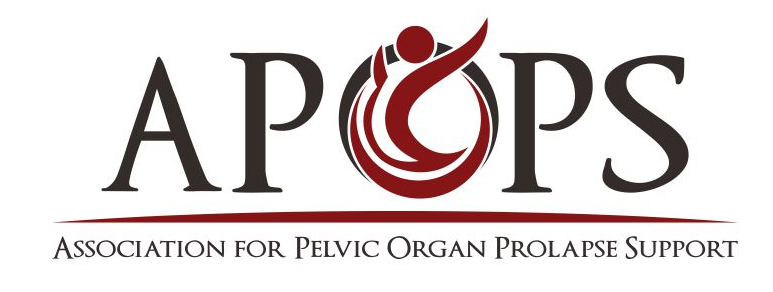Sherrie Palm
When I was diagnosed with pelvic organ prolapse in 2007, I was confused, but that quickly turned to anger and frustration.
Like most women, I had never heard of pelvic organ prolapse, a urogynecologist, or a pessary. Next steps for me were doing what everyone else on the planet would do, Googling. And the more information I found, the angrier I got. At that point in time, 3.3 million women in the US were estimated to experience POP. I can’t begin to imagine how unsettling it is for women who are diagnosed today and discover that 50% of women is the current POP prevalence estimate.
In the years that have passed since the destiny diverting day I stepped into the pelvic organ prolapse advocacy arena, much has shifted. There’s good news and bad on the POP front lines. Despite the difficulties navigating the transvaginal mesh mess that exploded in the United States in 2011, the end result was beneficial. We now have sanctioning of Female Pelvic Medicine Reconstructive Surgeons (FPMRS urogynecologists and urologists), the physician specialty providing pelvic organ prolapse assessment and treatment. The FPMRS system has enhanced protocol to educate physicians regarding the appropriate use of mesh. New devices are continually developed and are now researched and regulated more strictly. Innovative nonsurgical treatments are continually discovered and evolved. Treatment options for women continue to expand and advance.
However, while the treatment side of POP moves forward, little has improved regarding inclusion of POP in women’s pelvic wellness screening protocol. Little has shifted regarding development of POP curriculum to appropriately educate diagnostic clinicians about POP. And little has shifted in POP awareness and open dialogue during women’s wellness exams.
POP was not openly discussed during pelvic wellness exams back in 2007 when I was diagnosed. It is still not openly discussed today unless women initiate the conversation related to symptoms they experience. Research abstracts and articles are available online, but clinician/patient discussions rarely occur unless women bring the topic up. When I was diagnosed with POP, I wanted to shout it to the world in a fit of rage. I was furious that despite the pandemic prevalence of this common, cryptic condition, I was given no forewarning. It did not make sense to me then. It doesn’t make sense to me now. Childbirth and menopause are the leading POP causal factors. Women’s wellness screening includes a routine pelvic exam, but POP screening is not standard practice during pelvic exams. What’s wrong with this picture?
As in every underrecognized aspect of health, we don’t know what we don’t know. Every single woman newly diagnosed with or suspecting she has POP because she’s Googled her symptoms online, must travel down a diverse path of self-discovery. Five types of POP, four levels of severity, numerous types of POP occurring simultaneously, diverse symptoms that may or may not occur, multiple nonsurgical treatment choices, an abundance of surgical options, difference of opinion among healthcare professionals - the list of variables goes on and on. The only universal denominator with POP is the fact that it occurs to women.
Every time I communicate with women struggling to dissect the maze, I feel the steps to stimulating open POP discussion are taking too long. Which is related to the ineffective open dialogue about pelvic organ prolapse at the diagnostic level. Which is related to the lack of diagnostic clinician curriculum. Which is related to lack of academic evolution in the gynecologic sector. If our gynecologists, primary care physicians, midwives, and other healthcare clinicians who provide pelvic exams aren’t educated on the prevalence of POP and the need for routine screening, how is the status quo ever going to improve?If our gynecologists aren’t educated on the prevalence of POP and the need for routine screening, how is the status quo ever going to improve? We need to talk about pelvic organ prolapse. We need to talk about pelvic organ prolapse OUT LOUD. Considering the estimated 50% prevalence, POP is undoubtedly an aspect of female health that should be routinely screened for, diagnosed, and treated, just as heart health, breast health, blood pressure, and blood sugar is. Silence should no more surround vaginal and pelvic health than any other aspect of women’s wellness.
Not a day goes by that I don’t wander upon an intriguing new POP insight, statistic, article, study, or conversation shining unique light on the diverse layers of pelvic organ prolapse. To say my world is buried in layers of information I wish I could absorb by osmosis is an understatement. But the POP silence in healthcare is staggering. While we certainly should celebrate the many advances and changing societal perceptions in women’s health that have occurred in previous generations, it is imperative we remain both cognizant and at times critical of the current stagnation. There is little doubt, it’s time to bring pelvic organ prolapse directives into the 21st century.
Every Voice Matters.


